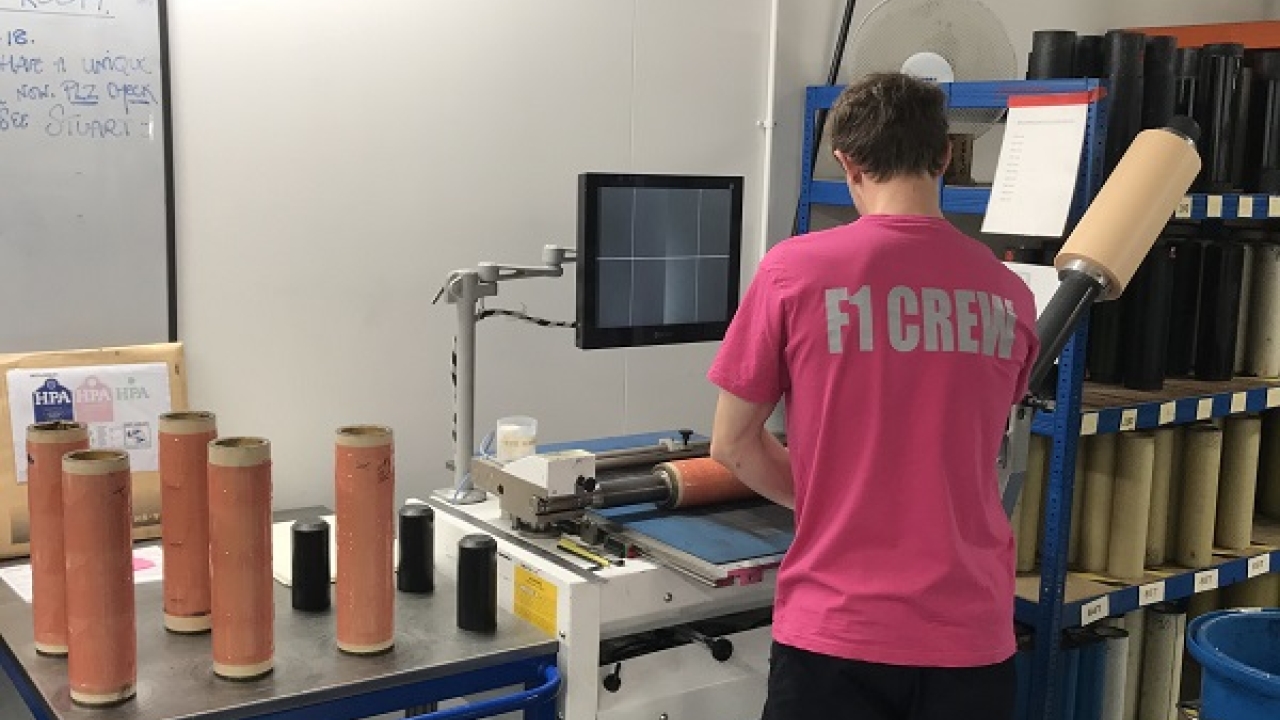Driving sustainable processes with a motorsport mindset

‘The key to staying competitive in today’s crowded, accelerating label and print industry is to perform with the smooth coordination of a Formula 1 pit crew,’ says Paul Larkin, operations director at Hamilton.
An F1 team’s pit stops are an integral part of any race strategy, with the crew’s organization and slick changeovers critical to the driver’s track success. Faced with growing demand for shorter runs and swift turnarounds alongside sustainability, Larkin believes label manufacturers can learn a lot from the way F1 racing approaches operational excellence.
‘The market is evolving rapidly, and businesses have to be able to respond quickly to shifting consumer needs, and balance environmental and cost challenges,’ continues Larkin.
‘For printers using traditional techniques such as flexo, this also means surviving the threat posed by digital technologies and highlighting the former’s continued relevance. A well-honed system is crucial here, future-proofing the wider sector’s prosperity by fine-tuning all areas of productivity to ensure fast service capabilities and customer satisfaction.’
With F1 Principles, Hamilton is drawing on the concept of well-practiced harmony with no room for lagging or error to optimize every element of its flexo-based processes. This centers around precision, waste reduction and collaboration. For example, Hamilton employs F1’s policy of finessing changeover and adjustment techniques to minimize make-ready and wash-up time, while also boosting accuracy via a reliable predictive print system. In the same way that pit crews have all members and kit in place and ready for work to begin and end within seconds, Hamilton is prioritizing proactive preparation in any job by making sure all elements – from ink to paper – are in order before work begins.
Scientific approach
The company is also taking a scientific approach to manufacturing. A measurement and control philosophy is in place for every step of the print process to ensure optimum efficiency and performance so that Hamilton is only producing premium quality products on time, every time.
Larkin adds: ‘Though fundamental, implementing thorough equipment, materials and maintenance planning or even properly prepping color matching are steps often overlooked by many printers, who may be inclined to cut corners in order to meet tight deadlines. However, just as the slightest mistake can be catastrophic in F1, small oversights in settings and execution can completely derail a project and endanger a business’ reputation.
‘Rather than hastening production runs, this strategy is in fact liable to slow jobs down and waste resources by increasing the probability of error. In contrast, we keep readiness requirements on-track through exercises such as perfecting fingerprinting and ink laydown, delivering thorough staff training and continually analyzing performance. This enables projects to get off the line in the best time with the best chances for success, as well as enhancing efficiency by curtailing misuse of inks, materials and energy. Reducing the carbon footprint associated with sending goods to waste disposal facilities and unplanned equipment downtime, we promote the environment, productivity and profits.’
The Hamilton production team offers skill and asset flexibility to ensure a continual improvement mindset is embedded. Each operative is trained on every line which has the exact same processes, procedures and layouts applied to deliver high-speed accuracy. The aim is to empower employees so that each one understands how their role is critical to the performance of the team and business.
‘Many printers can provide either speed, quality or sustainability, but few are able to calibrate their activities to achieve all three goals simultaneously,’ says Larkin. ‘Whether identifying procedures which recurrently result in waste or investing in the most advanced equipment, our processes differentiate our service offering and set the example for operational innovation to the industry. Benefiting the consumer and the manufacturing community alike, F1 Principles are an ideal pattern to emulate here.’
He continues: ‘Our goal is to demonstrate how traditional print methods are viable today and can continue to be so in the future. Taking flexo into the fast lane, we are accelerating outputs and raising quality parameters to ground-breaking levels while becoming more competitive, creating further jobs and improving profitability – all with minimized waste.’
Stay up to date
Subscribe to the free Label News newsletter and receive the latest content every week. We'll never share your email address.


